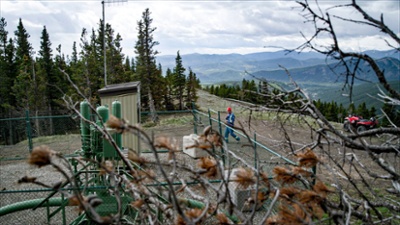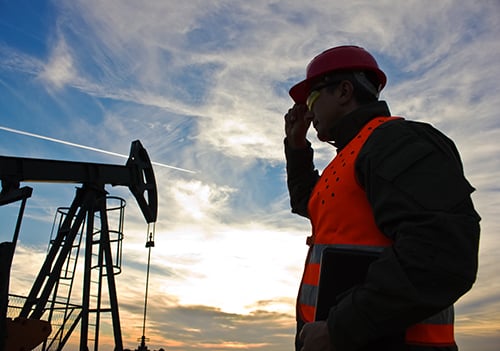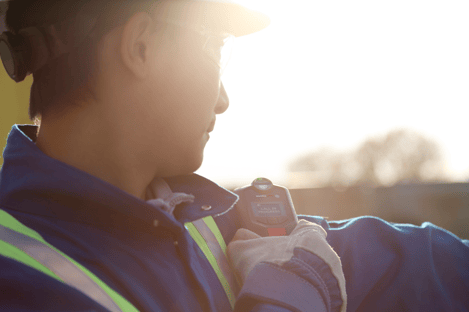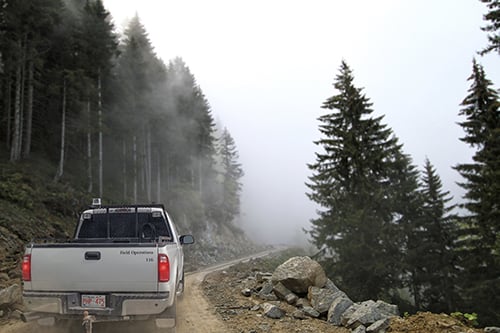Blackline Safety is a technology leader driving innovation in the industrial workforce through IoT (Internet of Things). With connected safety devices and predictive analytics, Blackline enables companies to drive towards zero safety incidents and improved operational performance. Blackline provides wearable devices, personal and area gas monitoring, cloud-connected software and data analytics to meet demanding safety challenges and enhance overall productivity for organizations with coverage in more than 100 countries. Armed with cellular and satellite connectivity, Blackline provides a lifeline to tens of thousands of people, having reported over 200 billion data-points and initiated over seven million emergency alerts. For more information, visit BlacklineSafety.com and connect with us on Facebook, Twitter, LinkedIn and Instagram.
Safety for your Most Vulnerable, Remote and Lone Oil and Gas Workers
Blackline Safety, Leader in Connected Gas Detection & Lone Worker Safety
October 18, 2021
Lone and remote worker safety
 Working alone is inherently dangerous, then layer on additional risks like hazardous gas exposure, health incidents, wildlife encounters, extreme weather, vehicle accidents, trips and falls, and the threats multiply. Cell and radio coverage is often spotty at remote locations such as exploration areas, well sites and compressor stations, making communication with your people and dispatching help difficult if problems arise. Extra care must be taken to ensure the safety of the most vulnerable remote oil and gas workers.
Working alone is inherently dangerous, then layer on additional risks like hazardous gas exposure, health incidents, wildlife encounters, extreme weather, vehicle accidents, trips and falls, and the threats multiply. Cell and radio coverage is often spotty at remote locations such as exploration areas, well sites and compressor stations, making communication with your people and dispatching help difficult if problems arise. Extra care must be taken to ensure the safety of the most vulnerable remote oil and gas workers.
Lack of visibility into a situation can be fatal
Well operators, for example, often drive for long periods of time alone, so how do you know if they’re safe at all times? And refinery workers, even though there are a lot of other workers onsite, due to the size of the facility they can also face similar risks. If they fall and no one sees it, how will anyone know what happened?
One indication a lone worker is in harm’s way is a missed  check-in, but sometimes that’s already too late for an emergency response. Missed check-ins also doesn’t give a clear indication of what happened or where the person might be located. Rescuers then face added risks when they don’t have accurate information about the situation at hand – an all-to-common scenario when a lone worker is unaccounted for.
check-in, but sometimes that’s already too late for an emergency response. Missed check-ins also doesn’t give a clear indication of what happened or where the person might be located. Rescuers then face added risks when they don’t have accurate information about the situation at hand – an all-to-common scenario when a lone worker is unaccounted for.
Thankfully, risks to lone workers can be mitigated through personal safety monitors provided to each worker, accompanied by live safety monitoring via cellular or satellite connectivity. This makes it possible to quickly detect and identify workers in trouble and deploy the appropriate measures to ensure their safety, regardless of their location.
Five Capabilities for Lone Worker Safety
If you’re looking for additional protection for your lone worker, there’s a lot to think about. But the following five capabilities are must-haves to keep lone, often remote, oil and gas workers--and rescue personnel--as safe and protected as possible.
1. Live monitoring with GPS location tracking
In rescue scenarios, when every second counts, additional time spent trying to locate a worker can be the difference between life and death. Live safety monitoring and GPS location tracking enables rescue teams pinpoint the location of a remote worker, saving lives with a faster response--with no search teams required.
Personal monitoring devices like the G7 Series from Blackline ensure that a remote worker’s location-and the hazards present - are always known, making it possible to quickly locate a worker in distress and respond instantly.
For example, when a lone worker suffered a cardiac arrest and had a subsequent fall, the G7c he was wearing immediately went into alert and notified Blackline’s Safety Operation Center (SOC). The worker also pulled the SOS latch to indicate he was in distress. Emergency measures were quickly initiated, and the worker’s supervisor was able to locate him in the field and use an AED and CPR to help the worker while the SOC dispatched local emergency services. Soon after, he was taken to hospital for a safe recovery.
Read the full story
2. Satellite connectivity
 Satellite connectivity enables real-time monitoring of a remote worker’s safety and is a must for workers that frequently visit locations with poor cell or radio coverage.
Satellite connectivity enables real-time monitoring of a remote worker’s safety and is a must for workers that frequently visit locations with poor cell or radio coverage.
In more remote locations, workers may need to transfer from a truck to an ATV. Some satellite uplink devices are permanently mounted to the truck, limiting the worker’s ability to work safely further away from the vehicle. The G7 Bridge from Blackline Safety connects to satellite but also has a magnetic base and battery that allows the device to be moved between the truck to an ATV so that workers are not restricted to shorter ranges like one or two miles.
3. Rapid communication capabilities
A connected safety solution for lone workers should include quick and accessible communications via push-to-talk (PTT) and text message to enable a faster response from prepared teams when a worker is identified as at risk.
PTT is an optional service for Blackline’s G7 safety wearables and portable area monitors that allows teams to stay connected with each other whether it’s between two colleagues, through a group channel or to all connected devices.
4. Gas detection
But what if a worker is incapacitated from hazardous gas exposure and unable to let someone know there’s a problem? That’s where gas detection is critical. Real-time monitoring alerts let safety monitoring personnel know if a worker has been exposed to a combustible or hazardous gas, what kind and at what concentration.
Furthermore, if a remote worker appears to be in danger, the ability to remotely access their gas readings is invaluable, providing rescuers with improved visibility into the situation and helping them plan the emergency response accordingly. This advanced knowledge protects the rescuers from potential harm and allows them to respond more effectively.
Supporting software such as Blackline Live gives you real-time confirmation of a worker’s safety but the included reporting suite of Blackline Analytics empowers leaders to make proactive and informed decisions to ensure next level safety.
5. Fall detection
 Another indicator a worker may be in trouble is when the person falls or stops moving for a period of time. Personal safety monitoring devices should feature person down and fall detection alarms that are visible to anyone with access to the monitoring dashboard.
Another indicator a worker may be in trouble is when the person falls or stops moving for a period of time. Personal safety monitoring devices should feature person down and fall detection alarms that are visible to anyone with access to the monitoring dashboard.
For example, all G7 devices detect a person-down event when an employee is motionless and sense if a worker trips, slips or falls, then triggers an alarm. These alarms automatically alert live monitoring personnel that the worker is down, and the data from their monitoring devices gives them the information they need to rapidly diagnose the situation and dispatch emergency services, if required.
Conclusion
Protecting the health and safety of lone oil and gas workers is critical. With the right safety monitoring solution in place, you can have peace of mind that your people’s safety is being continuously monitored and those in distress are instantly connected to potentially lifesaving assistance.
Get In Touch
Let’s start a discussion about your safety challenges and needs.
Related Blog Posts
Why Cloud-Connected Safety Solutions Are a Game-Changer
July 10, 2024
Cloud vs. On-Premises: What’s Right for Your Workers? What does it mean to connect safety devices through on-premises docking stations or gateways...
Cool Under Fire: How Blackline Safety is Transforming Emergency Response
June 26, 2024
Real-time data and advanced gas monitoring technology empower fire and hazmat teams to tackle the toughest emergencies with confidence As dangerous...
Workplace Violence and Lone Workers
March 06, 2024
Strategies to Get Ahead of a Rising Risk Lone workers, due to the nature of working alone without access to others, are highly vulnerable. One of...


